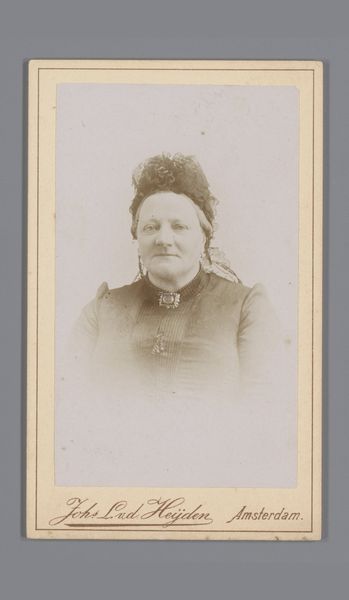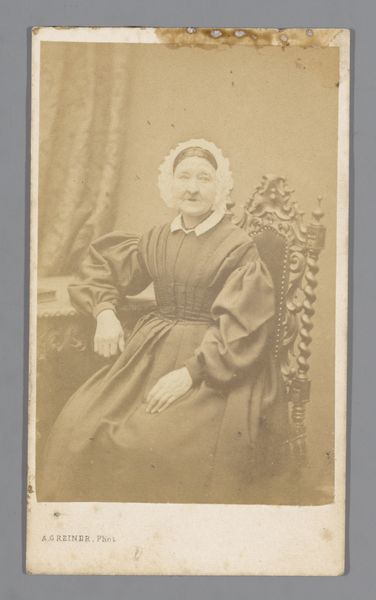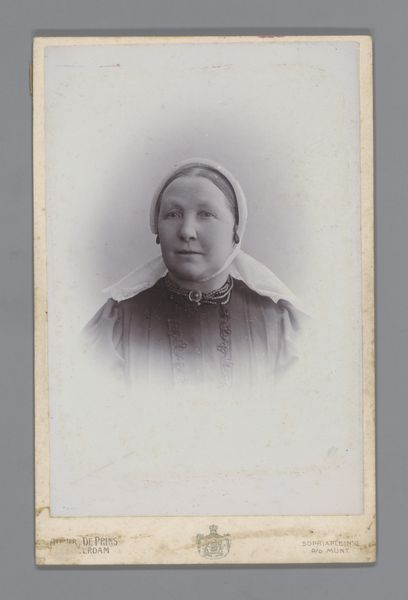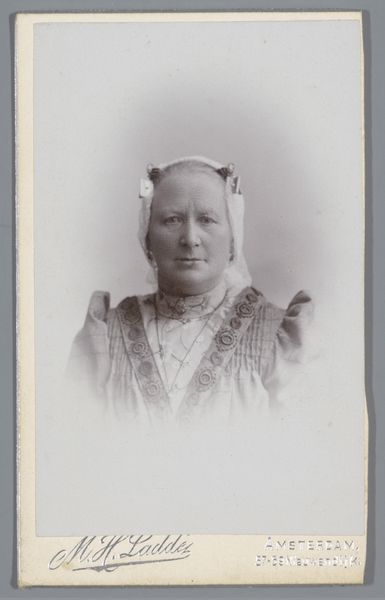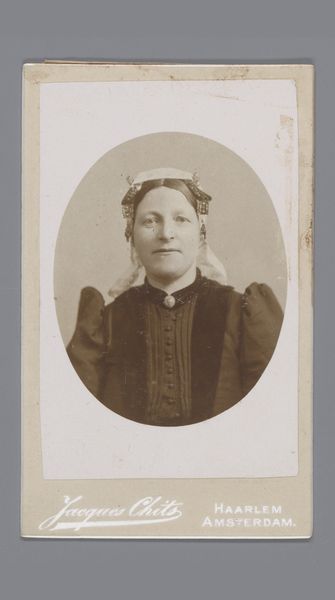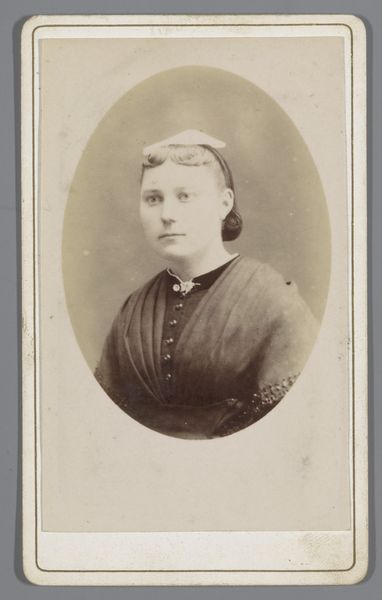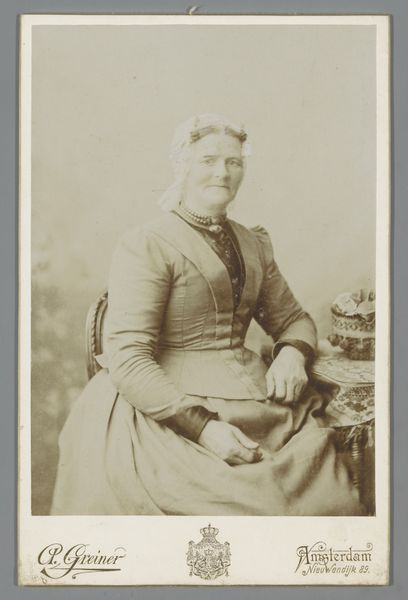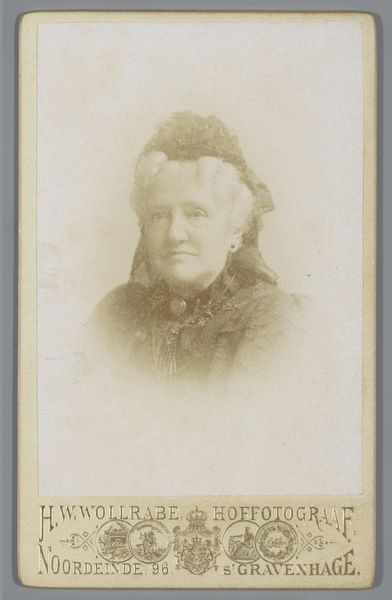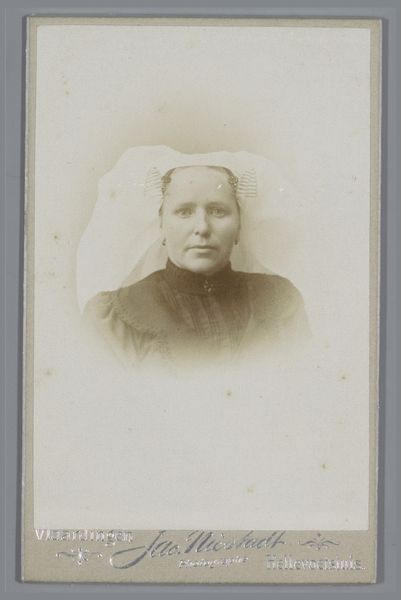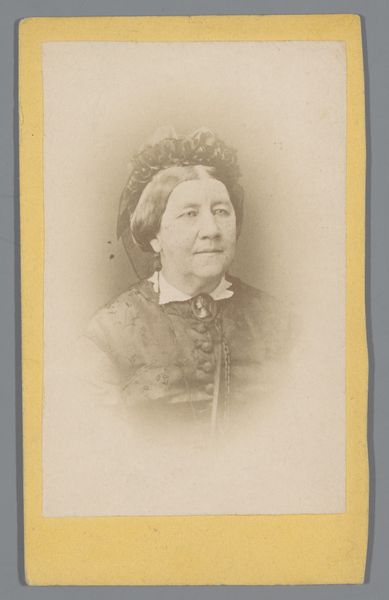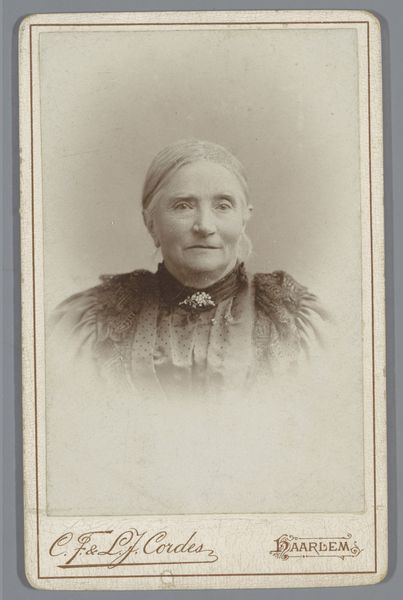
Portret van een vrouw, aangeduid als Koning 1889 - 1925
0:00
0:00
photography
#
portrait
#
16_19th-century
#
photography
#
19th century
#
realism
Dimensions: height 103 mm, width 63 mm
Copyright: Rijks Museum: Open Domain
Curator: Here we have "Portret van een vrouw, aangeduid als Koning," a photograph by Josephus Hendrikus Petrus Coppens, created sometime between 1889 and 1925. What’s your immediate reaction? Editor: The woman’s headdress and beaded necklace strike me first. There's a kind of…regal presence suggested, even in this modest photographic form. The lighting seems carefully arranged to highlight specific details. Curator: Yes, and consider the implications of the title itself. "Koning," meaning "King." It's essential to unpack that in relation to gender, power, and representation. Who decided she would be named in that way and what social dynamics influenced that naming? Editor: Fascinating. I immediately look to the iconography of the clothing and jewelry. Her lace cap is quite traditional, isn’t it? Perhaps connoting virtue or regional identity. It stands out due to its symbolic presence. Curator: Exactly. We might look at how this photographic style either reinforces or challenges societal roles of women at the time. The choice to render her in this straightforward style – realism, as they call it - is in and of itself a powerful social statement. No attempt to embellish or romanticize. Editor: The dark beads and ornament too suggest protection. Given this was taken sometime around the turn of the century, might there be additional, personal layers to this imagery, particularly surrounding themes of family legacy? Curator: Most definitely, and considering the artist… it could tell us volumes. The woman is placed in an historical and social milieu with shifting dynamics of power, and her direct gaze demands acknowledgement of that power dynamic. How she wishes to be seen, in that moment, given all of that. Editor: Absolutely, by seeing beyond her singular identity. By reflecting on the symbols used, one recognizes broader concepts such as dignity. It resonates even now. Curator: Ultimately, through this intersectional approach, we hopefully create a richer experience for anyone viewing this portrait, beyond just aesthetics. Editor: Yes, allowing this woman, caught in time, to whisper across history through her chosen symbols.
Comments
No comments
Be the first to comment and join the conversation on the ultimate creative platform.
